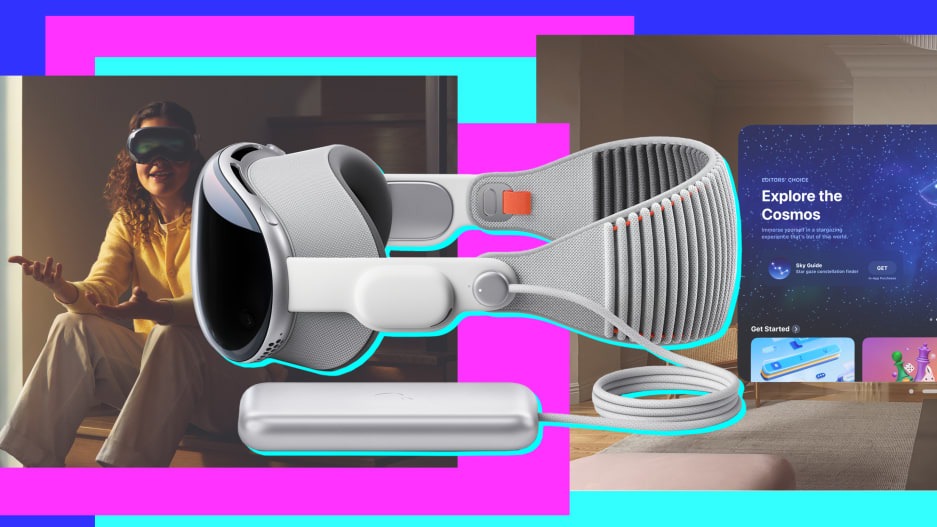- | 8:00 am
Apple may have already won the headset platform wars
For all the ways in which the Vision Pro represents uncharted territory, it’s also an Apple product through and through.

On Monday afternoon, as part of my visit to Apple headquarters for its WWDC event, I got to try its Vision Pro “spatial computing” headset. I hoped to be wowed—and given the immersive, high-end experience the company has created, I was.
By pricing the headset at $3,500, Apple didn’t have to make painful decisions about which technologies it could or couldn’t afford to include in the device. The result calls on a bevy of processors, sensors, and displays to go beyond any consumer-level VR, AR, or mixed-reality product we’ve seen before.
But I also found that the Vision Pro offered something I hadn’t expected: comforting familiarity. For all the ways in which it’s wildly different from an iPhone, iPad, or Mac, it shares many of their apps and services, along with their overarching sensibility. This isn’t Apple’s take on the metaverse—a world that, even though it doesn’t exist yet, has already developed a reputation for being foreign and foreboding. Instead, it’s the Apple environment millions of people already know—part of a platform of platforms that already spans everything from the computers on people’s desks to the phones in their pockets to the watches on their wrists.
While no other company has been remotely as successful at assembling such a portfolio of integrated products, the basic idea isn’t new. Back in the 1990s and early years of this century, Microsoft tried a similar strategy with Windows. It even pursued some of the same markets Apple would later enter, such as phones, tablets, and watches. That plan didn’t find lasting success, though, in part because Microsoft never really figured out how to make Windows make sense on devices that lacked a keyboard and mouse.
Then there’s Google. It would also like to be a player on all of computing’s new frontiers. But though the company has the world’s most-used mobile operating system in Android, it’s had trouble extending that coup to additional platforms. It even gave up on the headset business years before Apple got around to entering it.
Apple’s greatest strength has turned out to be creating experiences that work well together, with the company increasingly taking on as much overarching responsibility as possible, starting at the chip level. That doesn’t guarantee success—can you say “HomePod?”—but it might be the most formidable competitive advantage in tech history.
In a way, though, Apple’s current competition in headsets barely counts as competition. At $3,500, the Vision Pro’s starting cost places it in an entirely different plane of existence than something like Meta’s upcoming $499 Quest 3. It’s possible that both products will succeed on their own terms, satisfying distinct groups of consumers.
Still, if Apple is serious about spatial computing, it will eventually offer products at less stratospheric prices. And if the history of Apple’s influence on the rest of the industry is any evidence, Meta’s devices may owe more and more debt to Apple’s ideas over time. One way or another, it seems likely that future headsets from the two companies will take each other on more directly.
That could be bad news for Meta, which has lately been curtailing its hardware-platform ambitions rather than expanding them. (Last fall, it discontinued its Portal video screen and decided not to get into the smartwatch business after all.) Even now, it’s not clear that the Quest headset’s association with Meta and Facebook is a plus rather than an albatross that burdens it with inherent reputational damage. And only an infinitesimal fraction of Facebook’s three billion users have made their way into Meta’s Horizons virtual world. When it comes to new forms of reality, operating the world’s biggest social network has not proven to offer much strategic advantage.
I’m not declaring Apple the winner of a race that can’t even start until Vision Pro goes on sale. But the fact that I felt at home in the headset within 90 seconds of slipping it on for the first time is a benefit no other company could offer—and we shouldn’t underestimate its power.






































